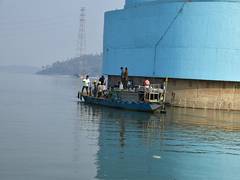Extreme weather: Deaths have reduced but property loss increasing, says IMD chief
New Delhi, Jul 13 (PTI) India has significantly reduced the number of deaths due to extreme weather events over the years but the loss of property is increasing amid socio-economic progress, the head of India Meteorological Department Mrutyunjay Mohapatra said on Thursday.
Comparing the 2013 Kedarnath floods and the Himachal Pradesh floods this year, he said there has been an overwhelming improvement in early warning systems, prediction and preparedness, prevention and mitigation by disaster management agencies and the general public.
“We have been able to minimise the number of deaths over the years, but the loss of property is increasing because socio-economic progress is increasing in the country,” he said in a video message for the launch of a report by policy research think tank The Centre for Energy, Environment and Water (CEEW).
With 2,500 people dying due to lightning strikes in India every year, Mohapatra said lighting has become a challenge while “we have almost fought and conquered disasters like tropical cyclones”.
“Lightning is a very small-scale event and takes less time to occur. Its prediction is also difficult,” he said.
However, over the years, the India Meteorological Department, the Ministry of Earth Sciences, and the Indian Institute of Tropical Meteorology have together developed a modelling system for prediction of lightning.
India is among only five countries in the world that have an early warning system for lightning.
With the rise in urban population, he said, urban flooding has become another challenge for the country.
According to the CEEW report, an estimated 72 per cent of districts in India are exposed to extreme flood events but only 25 per cent of them have level flood forecasting stations or early warning systems.
Despite high exposure to floods, Assam, Bihar, Uttar Pradesh, Odisha, and Sikkim are the best-performing states in terms of flood early warning systems.
The report showed that Himachal Pradesh, currently battling massive floods, is among the states with the lowest availability of early warning systems. Uttarakhand, on the other hand, is moderately exposed to extreme flood events but has a high availability of flood early warning system, it said.
Delhi, in the throes of severe flooding due to a raging Yamuna, is moderately exposed to extreme floods and has a moderate level of resilience through an early warning system (EWS).
Approximately 66 per cent of individuals in India are exposed to extreme flood events. However, only 33 per cent of them are covered by flood EWS. Moreover, 25 per cent of the Indian population is exposed to cyclones and their impacts, but cyclone warnings are available to 100 per cent of the exposed population, the report said.
According to independent think tank Centre for Science and Environment, India experienced extreme weather events on 314 of the 365 days in 2022. The events claimed 3,026 lives and damaged 1.96 million hectares of crop area.
Extreme weather, climate and water-related events caused 573 disasters in India between 1970 and 2021 that claimed 1,38,377 lives, according to data from the World Meteorological Department, a specialised agency of the United Nations.






